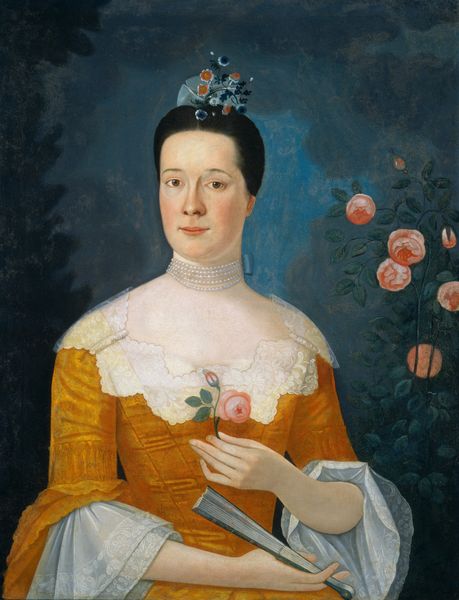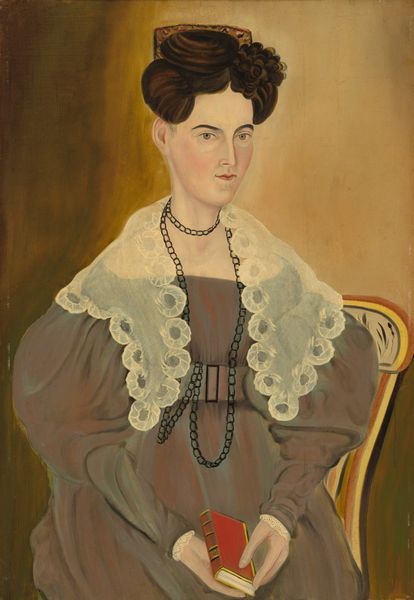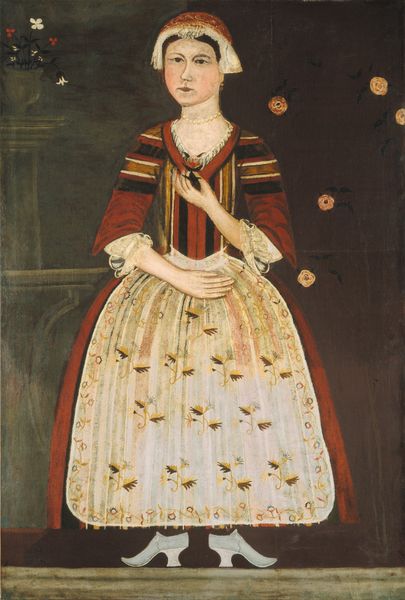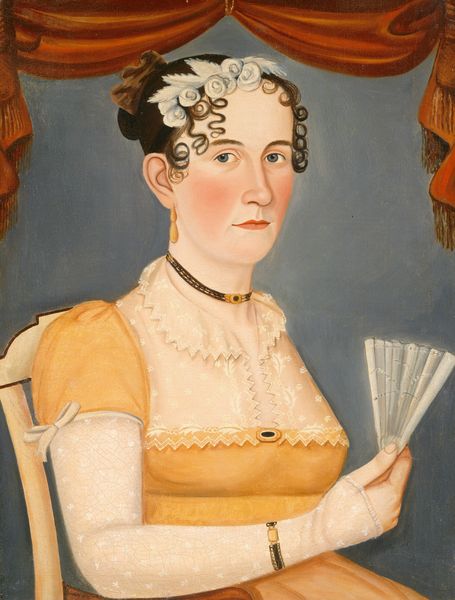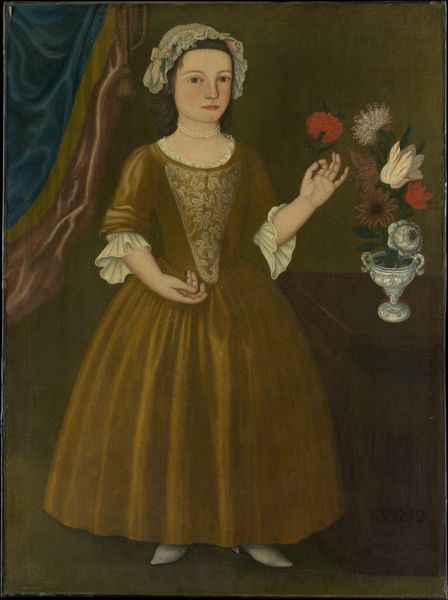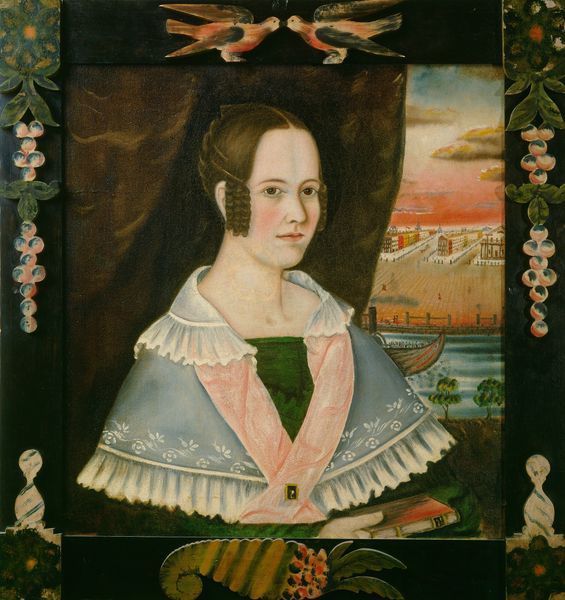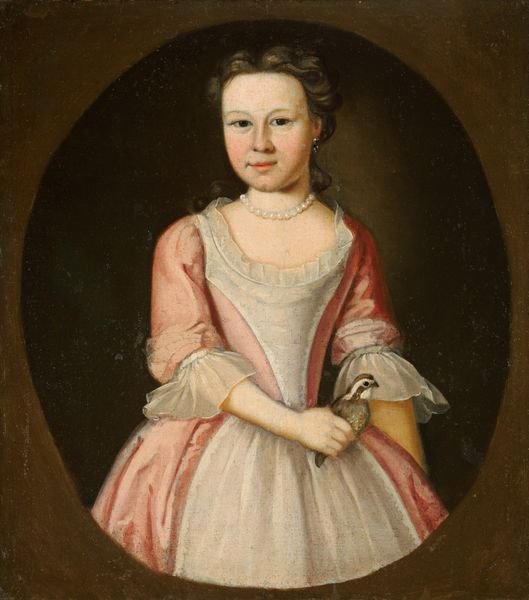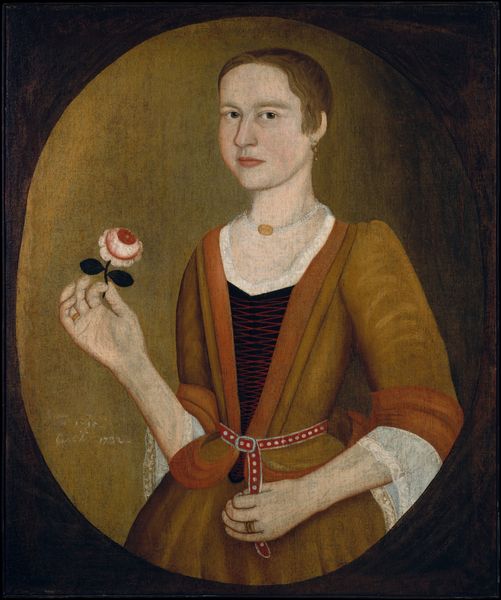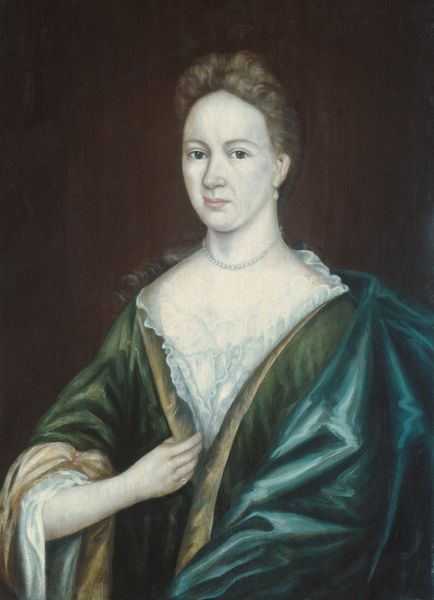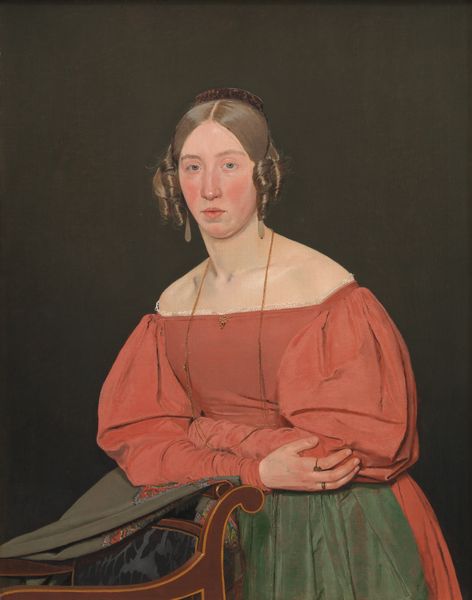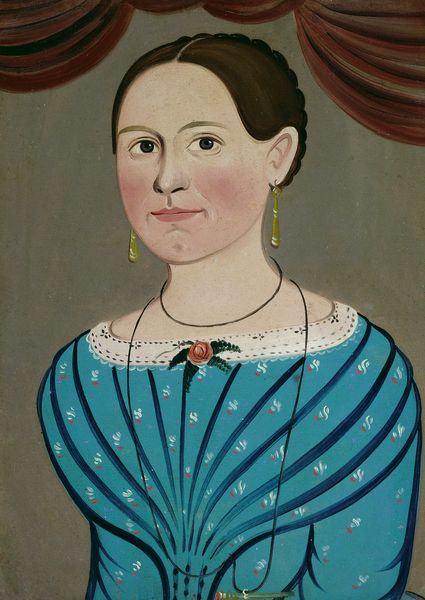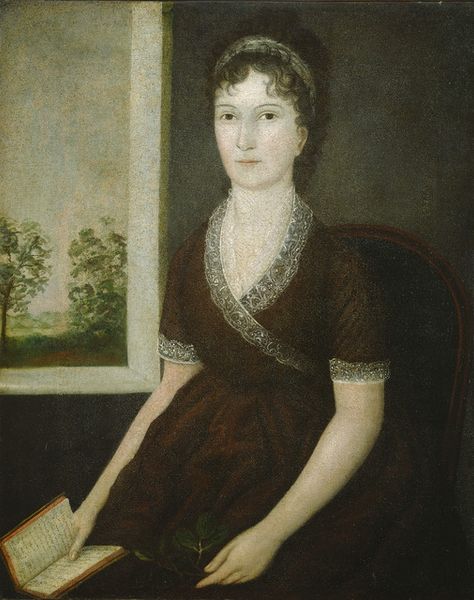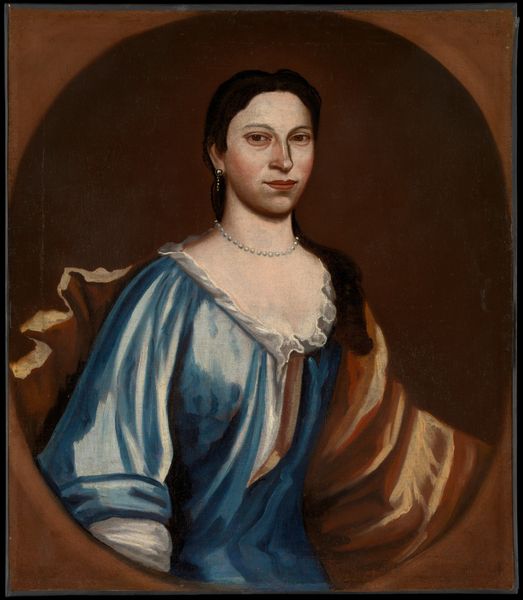
painting, oil-paint
#
portrait
#
painting
#
oil-paint
#
oil painting
#
portrait drawing
#
history-painting
#
portrait art
#
watercolor
#
rococo
Dimensions: overall: 92 x 73 cm (36 1/4 x 28 3/4 in.) framed: 102.6 x 80 x 4.8 cm (40 3/8 x 31 1/2 x 1 7/8 in.)
Copyright: National Gallery of Art: CC0 1.0
Curator: Let's take a closer look at "Susanna Truax," an oil-on-canvas portrait estimated to have been created around 1740. It presents a three-quarter view of a woman against a simple backdrop, and has strong rococo influences. Editor: The first thing that strikes me is how deceptively simple it seems. There’s almost a folk-art quality to the presentation of her figure. Curator: It's a very intriguing blend of formal portraiture and what might be termed provincial style. What contextual details stand out to you? Editor: The flat planes and almost stiff pose, versus the meticulous floral embroidery detail on her gown create a dichotomy. One can appreciate the symbolism of such finery but question its presentation alongside the less-refined face and figure. Does this say something about the sitter's place in society? Or perhaps about the artist's skill, or available style in the region? Curator: Precisely. Her clothing suggests wealth and status—the fine embroidery being a mark of luxury but also labor. Remember, this was an era when textiles held significant social and economic value, which definitely places her. And how might this garment construct and reinforce identity? Editor: Her hands also look delicate. Perhaps she’s from a class that is shielded from manual labor. Then the artist depicts an intriguing and almost awkwardly posed landscape backdrop over the right shoulder. It is likely intended to denote property and stature, too? Or the beauty of the American landscape for settlers? Curator: The painting subtly encodes the emerging social order and gender dynamics. The controlled landscape, the elaborate but restricted costume: they collectively speak of constructed identities and social aspirations. Editor: Considering this painting, I reflect on the limitations placed on women, whose identities were intricately tied to their social status and their domestic roles. While seemingly celebratory, this piece also invites us to examine the lack of agency for a certain strata of people at that moment in American history. Curator: A good reminder to always consider what is seen, unseen, and how its image has persevered in our contemporary exhibition spaces.
Comments
No comments
Be the first to comment and join the conversation on the ultimate creative platform.
